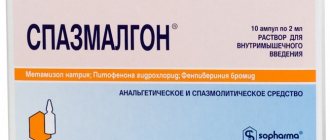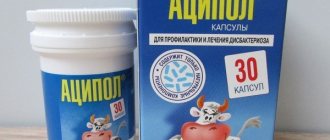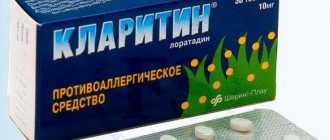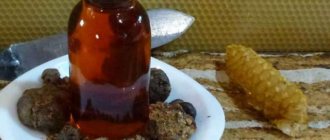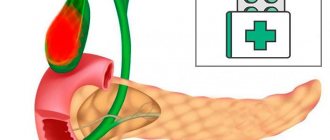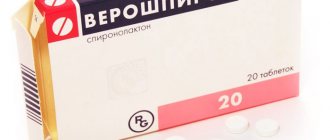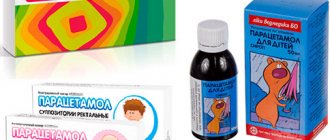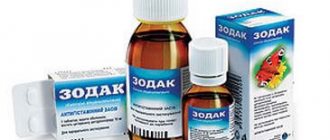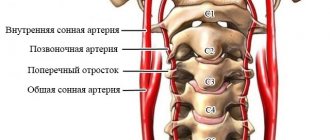There are many reasons that provoked the development of the inflammatory process, but the symptoms are similar. Relieving pain, relieving fever, and suppressing inflammation are important tasks in the treatment of diseases of the muscles, spine and joints. In clinical practice, nonsteroidal drugs are widely used for such purposes. NSAIDs are first-line drugs intended for symptomatic treatment, including Ketonal. The action of the drug is aimed at eliminating the painful manifestations of the disease, quickly alleviating suffering and improving the patient’s quality of life. At the same time, Ketonal does not suppress metabolic processes in chondrocytes and therefore does not cause damage to articular cartilage. In what cases, how to use Ketonal correctly, what contraindications exist - the instructions for the medicine will tell you about this in detail.
Pharmacological properties of the drug
Like other NSAIDs, Ketonal has a powerful analgesic and anti-inflammatory effect, without producing psychotropic effects or disrupting the functions of the nervous system. The therapeutic effect of the drug is due to Ketoprofen, the active substance included in its composition. Belongs to the group of propanoic acid derivatives. The instructions indicate that Ketonal has the following properties:
- anti-inflammatory activity - relieves edema, swelling of the affected organ, redness of the skin in the area of inflammation, relieves pain that hinders movement. The effect is caused by Ketonal's ability to influence the activity of specific enzymes responsible for the production of prostaglandins - selectively inhibit the cyclooxygenase form of COX-1, suppress the activity of the COX-2 enzyme synthesized by prostaglandins that causes inflammation and the reaction catalyst of the enzyme lipoxygenase. The effect of the drug Ketonal in combating the inflammatory process is noticeable already by the end of the first week of use;
- analgesic effect - weakens and eliminates the feeling of pain. It is caused by a peripheral regulatory mechanism and a central one, which consists in directly suppressing the production of prostaglandins and influencing the activity of various substances that act on the central nervous system, peripheral parts of the nervous system and are responsible for the release of pain mediators. The analgesic effect of Ketonal is superior in strength to the effect of using paracetamol in combination with psychotropic substances. The therapeutic effect of taking 25 mg of a medicine containing Ketoprofen is comparable to a 400 mg dose of Ibuprofen and 650 mg of acetylsalicylic acid;
- antipyretic effect - in febrile conditions it reduces high temperature without affecting normal body temperature. It is achieved by reducing the sensitivity of the receptor neurons of the hypothalamus to fever-causing biologically active substances - pyrogens. The effect is moderate, inferior in strength to the analgesic and anti-inflammatory effects of Ketonal.
Features and Cautions
Pregnant and lactating women
In the first and second trimester, Ketonal is prescribed only in cases where the benefit to the mother outweighs the risk to the child. The third trimester suggests a complete ban on this drug, since ketoprofen can cause late and complicated labor. If taking Ketonal is necessary during breastfeeding, then the child is transferred to artificial formula.
Mechanism control
Ketoprofen does not directly affect the ability to control complex mechanisms or devices that require attention and reaction speed. But it is still not recommended to use it in such cases, since the list of side effects of the drug includes disorders of the nervous system.
Interaction with other drugs
Injections and other forms of Ketonal reduce the effectiveness of Mifepristone, diuretics and blood pressure lowering drugs, but enhance the effect of hypoglycemic medications (to reduce blood sugar levels).
In combination with other NSAIDs (Diclofenac, Aspirin, Ketorol, etc.), alcohol and glucocorticosteroids, it can provoke gastrointestinal bleeding. Impaired renal function is possible when Ketonal is taken simultaneously with diuretics and ACE inhibitors (Enalapril, Captopril, etc.). The risk of bleeding increases when ketoprofen is combined with any antithrombotic drugs, be it anticoagulants, thrombolytics or antiplatelet agents. When ketonal is combined with cardiac glycosides, Methotrexate, lithium preparations or calcium channel blockers, the blood concentration of these drugs increases.
You may be interested in reading: Ortofen tablets: instructions for use
Important instructions
Capsules and tablets can be taken with antacids such as Almagel, as well as milk, since they do not affect the rate of absorption and at the same time reduce the risk of developing complications from the gastrointestinal tract. Long-term use of Ketonal (injections and other forms) involves monitoring the composition of the blood and the state of the kidneys and liver, especially for older people.
The drug should be used with caution and under the supervision of a doctor for hypertension and heart disease.
Release forms and composition
For ease of use and to achieve maximum efficiency, the manufacturer produces Ketonal in different dosage forms. All of them contain a certain amount of the main active ingredient - Ketoprofen. The required dosage and method of administration are prescribed by the doctor. Pharmacies receive:
- Injections – injection solution in dark glass ampoules with a capacity of 2 ml for intravenous and intramuscular administration. The concentration of the active substance is 50 mg/ml. In appearance it is a colorless or pale yellow liquid. A blister contains 5 ampoules, a cardboard pack can contain 10, 30 or 50 Ketonal ampoules and is supplied with instructions. Auxiliary components: propylene glycol and distilled water - solvents; ethyl, benzyl alcohols – local antiseptics; caustic soda is an alkaline additive.
- Film-coated tablets 0.1 are light blue, lentil-shaped, biconvex in shape. White 50 mg capsules with a blue cap and long-acting white tablets containing, according to the instructions, 150 mg of the active ingredient are also produced. Supplied in glass bottles containing 20 tablets. Ingredients: Ketoprofen; fillers that give it mass and ensure complete absorption - lactose, corn starch, microcrystalline cellulose. Long-term release is provided by hypromellose, the binder is povidone, and the sorbent is pyrogenic silicon dioxide in colloidal form. The fluidity of the tablet mass is given by: talc, magnesium stearate.
- Capsules 0.15 - produced under the name Ketonal Duo, characterized by a modified release rate. They consist of 2 parts: white granules are characterized by rapid release, yellow granules are characterized by slow delivery. This determines the unique properties of the capsules, their ability to provide both a quick and prolonged effect. The capsules are enclosed in a transparent body made of gelatin, equipped with a lid painted blue with indigo carmine. The pack contains 3 blisters containing 10 capsules and instructions. In addition to standard MCC, lactose, povidone, primelose and polysorbate 80 surfactant, the capsules contain acrylic acid derivatives as additional ingredients. These polymers, called Eudragits, are made into a film coating that provides a specified release rate.
- Cream 5% – white in color, uniform consistency. 100 gr. the tube in individual packaging, in addition to Ketoprofen, contains: methylparaben E218, propylparaben E216 – preservatives; propylene glycol – a hygroscopic substance, a load-bearing element; isopropyl myristate, petroleum jelly - fatty components, soften the skin, facilitate the penetration of active ingredients; elfakos ST9 – stabilizer; glyceryl oleate and magnesium sulfate - waxy base and thickeners.
- Gel 2.5% – colorless, transparent, placed in 100 g. aluminum tube. The composition includes: carbopol – thickener, stabilizer; triethanolamine – binder; 96% ethyl alcohol, lavender essential oil – local antiseptics; purified water.
- Rectal suppositories are smooth, white suppositories containing 100 mg. Ketoprofen. Sealed in flexible soft packaging made of foil or heat-sealable film, 6 pcs. 2 such strip packets (12 suppositories) are placed in a pack. The composition includes fillers - solid fat and fatty oil Migliol 812.
Application diagram
For radiculitis, arthritis and other pain, it is prescribed intravenously. The dosage and method of administration are recommended by the attending physician. Intravenous injections are allowed only when the patient is in hospital or undergoing treatment in a day hospital. In this case, the drug is administered using 2 methods:
- An intermittent method involving diluting the contents of ampoules with a certain amount of physical solution. Then the medicine is administered over 30–60 minutes. After 8 hours, 1 more procedure is performed.
- Continuous, when the contents of the ampoules must be diluted with glucose solutions or physical solution. The injection is administered for 8 hours, after the same period of time the dropper is placed again.
In cases where the patient has very severe pain, narcotic analgesic drugs are prescribed with Ketonal injections.
Typically, Ketonal is mixed with Morphine in 1 container, and to use Tramadol together with Ketonal, each type of medication must be administered separately. This will help prevent sediment from forming.
According to the instructions, the storage conditions of the medicine must not be violated. The medication is stored in a dark place inaccessible to children.
How does Ketonal work?
In response to tissue-damaging stimuli and the development of the inflammatory process, cells begin to synthesize physiologically active substances - prostaglandins. These are mediators that signal disruptions in the functioning of organs and increase nociceptive sensitivity to the action of an irritating factor. Accumulating in the body, mediators support the inflammatory process, causing pain, swelling of tissues, muscles, blood vessels, ligaments and joints. By blocking the synthesis of enzymes involved in the production of prostaglandins, Ketonal relieves the painful manifestations of the disease - it relieves pain, relieves fever, and stops inflammation.
The instructions state that the mechanism of a powerful analgesic effect consists of several components:
- rapid penetration of Ketonal through the BBB - a physiological barrier that protects nervous tissue and maintains brain homeostasis, is available due to its high fat solubility;
- decreased sensitivity to the action of blood proteins - bradykinin, which plays an important role in inflammation and provides pain sensitivity;
- blocking exudation processes, stabilizing the lysosome membrane, which plays the role of a shield and protects from external influences, binding membrane receptors sensitive to irritants, while reducing their number and making it difficult for pain impulses to pass through the membrane;
- inhibition of the activity of neurons in the dorsal column nuclei;
- preventing cell adhesion - platelet aggregation, which prevents the blood from becoming viscous and the blood flow speed from decreasing;
- inhibition of the production of prostaglandins in the central nervous system, which inhibits the transmission of the pain signal to the thalamus and further to the cerebral cortex;
- suppression of the synthesis of pain substance P, which has a vasodilating effect, increases capillary permeability, activates the production of inflammatory mediators and is responsible for transmitting pain signals to the central nervous system.
The instructions included in the box with the drug describe the pharmacokinetic properties of Ketonal:
- good absorption from the lumen of the gastrointestinal tract, the ability to assimilate reaches 90%, the protein-bound part is 99%;
- the availability of the medication does not depend on food intake;
- the time to reach maximum plasma concentration depends on the route of administration: orally – 1-2 hours for regular tablets, 4-6 hours when using extended-release tablets; into the rectum – 1-1.5 hours; parenteral administration – 20-30 minutes. for intramuscular administration, within 5 minutes. – for intravenous infusion;
- ability to penetrate into synovial fluid - after 4 hours its content here exceeds the concentration in plasma;
- does not accumulate in the body, with the exception of liver failure;
- the level required for the therapeutic effect to occur persists for 6-8 hours in the synovial fluid, 2-18 hours in the blood and cerebrospinal fluid;
- almost completely degraded in the liver; upon initial use, first-pass metabolism is observed;
- leaves the body naturally - with urine, about 1% with feces, the half-life of conventional tablets and other dosage forms is 1.5-2 hours, prolonged - 5-6 hours, with kidney dysfunction and with age, the elimination processes slow down.
What is Ketonal ointment used for: indications
Due to the nature of its action, the drug is intended to eliminate painful sensations of both moderate and severe intensity. The specificity lies in what the ointment helps with - it can act in a wide spectrum, which explains the large list of indications for use.
The main purpose of the product is to use it for inflammatory processes and pain, which can occur with the following ailments:
- rheumatoid, reactive and psoriatic arthritis;
- inflammation of the vertebral bodies (Bechterew's disease);
- osteoarthritis;
- muscle pain;
- inflammation of the joint capsule or tendon tissue;
- neuralgic pain;
- radiculitis;
- consequences of traumatic injuries to elements of the musculoskeletal system (ligament ruptures, sprains, bruises, in particular of a sports nature).
Thus, the use of ointment is possible in all situations with pain, when there is no damage to the integrity of the tissues and it is possible to influence the problem from the outside.
Taking Ketonal
To prevent changes in the extracellular matrix, minimize the negative impact of the active component on the structure, functionality of articular cartilage and the occurrence of other undesirable side effects, NSAIDs are taken occasionally, at a time when the patient needs effective pain relief and anti-inflammatory therapy. The exact dosage of Ketonal is determined based on the severity of the disease, on the principle of sufficient duration of treatment and the most complete relief of pain. When prescribing, the doctor operates with minimally effective doses.
Each dosage form of Ketonal has its own special rules for administration, all of which are indicated in the instructions. The following methods of application and dosage are recommended:
- Tablets and capsules - preferably with food or immediately after a meal, washed down with a large volume of water or milk. To avoid breaking the protective shell, do not chew. Dosage regimen: 1 regular tablet 2 times a day or a long-acting tablet once a day. Used to quickly relieve painful symptoms. To achieve maximum therapeutic effect, it is allowed to combine with other forms of Ketonal. Capsules are prescribed for mild or moderate pain, taken 1-2 2-4 times a day. Do not exceed the maximum permitted dose - 200 mg per day (relevant for all forms of medication).
- Ketonal Duo capsules - in a standard single dose of 150 mg/day, are used for medicinal purposes for inflammatory diseases and pain of various origins. Replace injections and suppositories. The maximum allowable dose is 200 mg - 2 capsules with an interval of at least 12 hours. A necessary condition is to drink plenty of fluids, you can wash it down with milk.
- Injections - infusion of the solution intravenously (only in a hospital setting and no longer than 48 hours) or intramuscularly, 100 mg 2-3 times a day. Injections are prescribed in advanced cases, with inflammatory and degenerative lesions accompanied by severe pain.
- External use - according to the instructions, the course of treatment is limited to 2 weeks. This method of administration is recommended for osteoarthritis, inflammatory diseases, injuries, and ligament ruptures. Treat the painful area of skin with cream or gel 2-3 rubles. during the day. Apply a thin layer with light massaging movements. For an area of 5 cm, 100 mg of Ketoprofen is used.
- Rectal application - insert suppositories deep into the rectum after bowel movements, preferably 1 in the morning and 1 in the evening. Practiced in complex therapy.
Indications for use
The instructions include diseases and conditions for which Ketonal will be effective:
- articular syndrome - rheumatism, osteoarthritis, rheumatoid arthritis, gouty arthritis, ankylosing spondylitis;
- inflammatory and degenerative processes - bursitis of the knee joint, periarthritis of the shoulder joint, hand joint, inflammation of the synovial membrane, tendon pathology, lumbago;
- pain of various origins and localization - headache, muscle pain, back pain, attacks due to neuralgia, neuritis of the facial nerve, renal colic, malignant tumors;
- postoperative, post-traumatic period, painful menstruation, dislocations, bruises, sports injuries.
Contraindications, side effects
The instructions provide a list of conditions that exclude the possibility of using the medicine, these are:
- previously identified intolerance to NSAIDs, an infectious-allergic form of bronchial asthma, rhinitis, a history of nettle rash;
- period of exacerbation of gastrointestinal ulcer, dyspepsia syndrome, Crohn's disease, inflammation of the rectum, ulcerative colitis;
- blood diseases, increased bleeding, bleeding of any etiology;
- different types of failure - cardiac, renal, liver;
- period after coronary artery bypass surgery;
- age 0-15 years;
- duration of the 3rd trimester of pregnancy, breastfeeding.
Increased caution and constant monitoring by a physician is required when taking Ketonal in patients with the following pathologies:
- diseases of the heart, blood vessels, brain;
- dysfunction of the liver, kidneys;
- persistent high blood pressure;
- endocrine diseases;
- elderly, senile age.
According to the instructions, Ketonal may contribute to the development of some undesirable reactions for the body. This series includes:
- problems with the gastrointestinal tract - nausea, indigestion, difficulty defecating, diarrhea, abdominal pain, stomatitis, liver dysfunction;
- migraines, sleep disturbances, dizziness, irritability;
- changes in taste sensations, sounds in the ears, problems with the visual apparatus;
- allergic reaction, rapidly spreading swelling, hematuria, minor hemorrhages;
- anemia, platelet aggregation disorder;
- arrhythmia, increased blood pressure.
Indications and contraindications
The product should not be used by a child under 15 years of age (or as prescribed by a doctor), during pregnancy (1st and 3rd trimesters), with hypersensitivity, or allergies to NSAIDs. Contraindications also include open wounds, ulcers, and eczematous skin lesions. Treat with caution and in the shortest possible course for acute gastrointestinal diseases, for peptic ulcers in the past, for severe disorders of the kidneys and liver. When breastfeeding, only one-time use of cream or gel on small areas of the body is allowed.
Side effects may include:
- rash, irritation, other allergic reactions up to anaphylactic shock (rare);
- bleeding, development of exacerbations of ulcers, gastritis;
- nausea, diarrhea;
- eczema, in some patients - bullous or generalized.
People with kidney failure are at risk of worsening organ function. If side effects develop, treatment should be stopped immediately.
Price and analogues
Ketonal is a prescription drug. In pharmacies, Ketonal is found mainly from one manufacturer - the holder of the registration certificate of the multinational pharmaceutical company Sandoz. Average price is:
- injection solution 10 amp. – 240, 50 – 1020 rubles, Slovenia;
- cream 5%, 30 gr. – 310, 50 gr. – 420, 100 gr. – 580 rub., Germany;
- gel 2.5%, 50 gr. – 330, 100 gr. – 450 rub., Germany;
- tablets 0.1 po, 10 pcs. – 74, 20 – 200 rub.; 0.15 prolonged, 20 pcs. – 240 rubles, Slovenia;
- rectal suppositories 0.1, 12 pcs. – 255 rub., Türkiye;
- capsules Ketonal Duo 0.15, 30 pcs. – 240 rub.; 0.05 regular capsules, 25 pcs. – 106 rubles, Slovenia.
There are a large number of Ketonal analogues. Ketoprofen in a similar concentration contains a drug with the same name, as well as:
- Fastum, Valusal, Bystrumgel, Ultrafastin – gel, tablets;
- Oruvel – suppositories, Flexen – suppositories, capsules, gel;
- Arketal, Flamax - injections, capsules, Artrosilene - injections, gel, aerosol, capsules.
Contraindications to the use of anesthetic ointment
The ointment has a powerful effect on the human condition, so when using it, it is important to take into account the existing restrictions, in the presence of which you should refuse to use the product:
- individual high sensitivity to any of the components in the ointment, be it the main or auxiliary ingredient;
- the presence of damage to the integrity of the skin in the treated area;
- presence in the medical history of situations of an asthma attack in response to the use of a non-steroidal anti-inflammatory drug;
- history of photosensitivity;
- third trimester of pregnancy;
- children's age (up to 15 years).
Particular caution should be exercised in case of blood diseases, impaired functioning of the kidneys and liver, as well as in case of heart ailments in a chronic form. During the course of treatment, it is not recommended to simultaneously use other local anti-inflammatory drugs.
Reviews about Ketonal
The majority of those who left reviews (in 80-90% of cases) speak positively about the drug. According to patient reviews, the most popular forms of Ketonal are injections, tablets, gel and their combination. Among the advantages are the following arguments:
- choice, ease of use;
- not a drug, but provides reliable pain relief - even relieves spasms, severe pain in the lumbar region, joints, night attacks of pain;
- reduces pain within 20-30 minutes, superior to other NSAIDs;
- the effect lasts for a long time;
- 1 candle per day relieves menstrual pain;
- helps normalize motor function and quickly recover from injury;
- good consistency and cost-effectiveness of external products.
Based on their own experience, patients also note the negative aspects of Ketonal treatment. The disadvantages boil down to the following observations:
- lack of quick and complete pain relief - you have to wait 2-3 days for results from the start of treatment;
- development of adverse reactions;
- the cream does not absorb for a long time;
- burning and itching after using suppositories;
- high price of medicine.
Medical specialists support positive reviews and note the effectiveness of the drug - a pronounced analgesic and moderate anti-inflammatory effect. But they remind you of the need for careful use, because... Ketonal has a large number of contraindications and the risk of developing quite serious side effects.
Is the ointment harmful and what side effects might it have?
Considering the external application of the product, side effects usually manifest themselves in the form of local reactions. This doesn't happen often, but the possibility exists. So, the possible consequences of using the product include:
- systemic allergic reaction;
- itching, burning, redness in the area of application;
- asthmatic attack;
- aggravation of the situation in the presence of chronic renal failure.
When the first warning signs develop, you should stop using the ointment and consult a doctor. The ointment does not affect the speed of psychomotor reactions, so there are no restrictions regarding driving.
Ketonal ointment or gel - which is better?
The advantages of one or another form of drug release are determined by the specific situation. Thus, the gel does not contain fats and oils; it is usually produced on a water basis, due to which it is absorbed much faster and easier. Regarding the drug Ketonal under consideration, the difference in forms also lies in the content of the active component - in the gel its concentration is 2.5%, which increases the maximum daily dose from 5 to 10 centimeters of the product. Thus, the gel is better suited when it is necessary to treat large areas, while the cream, although it requires more effort during application, is also consumed much more economically.
How to replace Ketonal: drug analogues
When looking for a cheap analogue of a drug, it is worth clearly distinguishing between the concepts of an analogue and a synonym (generic) of a drug. Thus, products with the same active ingredient as the ointment in question include: Artrum, Artrosilene, Valusal, Fastum-gel, Flexen. If you need to choose a product with the same effect, but with a different component composition, then you should pay attention to the following drugs:
- Butadione ointment (active ingredient – phenylbutazone);
- Voltaren, Diklak, Diklovit, Ortofen, Diclofenac (work on the basis of diclofenac);
- Dolgit cream, Ibuprofen ointment (based on the substance ibuprofen);
- Indobene (indomethacin);
- Nise (active ingredient – nimesulide).
All of the listed products are intended for local application and elimination of severe painful sensations.
Instructions for use of the medication
In accordance with the instructions, Ketonal tablets, just like long-acting pills, must be swallowed whole; they should not be chewed, bitten or crushed in any way. Take the medicine with a sufficient amount of water; whole milk is also suitable (you will need at least one full glass). It is recommended to take the tablets with meals, as this reduces the risk of developing side effects from the digestive system, and also minimizes the feeling of discomfort in the stomach area.
What else does the instructions for use for Ketonal tablets tell us? The use of milk is aimed at reducing the unpleasant condition in the internal organs. However, only those people who tolerate it normally can take the medicine with this product. In principle, it is allowed to take tablets before meals, supplementing them with water, but in this case the patient may experience pain along with an unpleasant painful sensation in the stomach, which goes away on its own within forty to sixty minutes.
Pharmacodynamics and pharmacokinetics
Pharmacodynamics
Ketoprofen inhibits the activity of cyclooxygenase, which inhibits the process of prostaglandin synthesis.
The drug also inhibits the synthesis of bradykinin, lipoxygenase, stabilizes lysosomal membranes in the cell and suppresses the production of enzymes that are involved in the inflammatory process. Ketoprofen does not have a negative effect on the condition of articular cartilage.
Pharmacokinetics
The process of absorption of ketoprofen in the body is very slow and it practically does not accumulate in the body. Bioavailability - 5%. The drug penetrates well and reaches therapeutic concentrations in synovial fluid, muscles, ligaments, and subcutaneous tissue. Its concentration in blood plasma is insignificant. Metabolized in the liver to form conjugates. Excreted in urine. Slowly.
Indications for use
Ketonal, including Ketonal Uno, Ketonal Duo, is recommended for the symptomatic treatment of inflammation and degenerative conditions in the area of bones, muscles, ligaments, and cartilage.
Symptom relief is usually carried out in patients suffering from:
- rheumatoid arthritis;
- psoriatic arthritis;
- reactive arthritis;
- polyarthritis;
- periarthritis;
- arthrosynovitis;
- bursitis;
- rheumatism;
- for neuralgia;
- myalgia;
- as well as sprains and ligament ruptures;
- bruises;
- severe headache;
- renal colic;
- phlebitis;
- lymphadenitis;
- post-traumatic syndromes, for symptomatic treatment of oncological pathologies;
- for relief of migraine pain.
